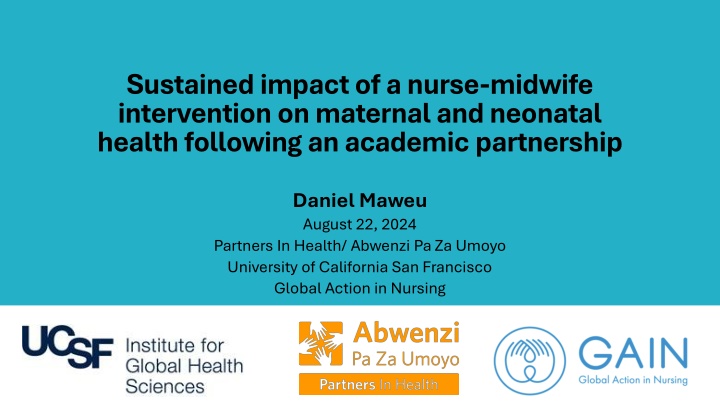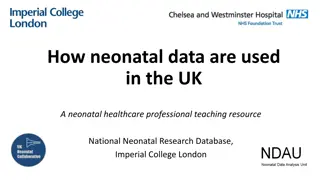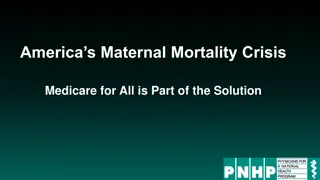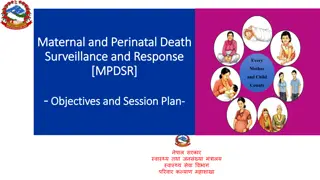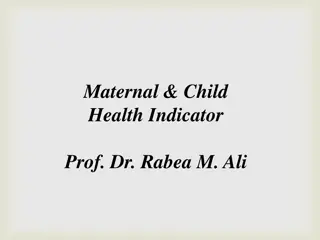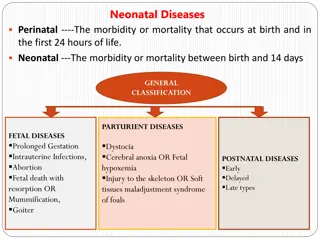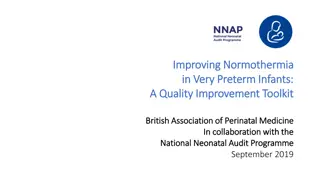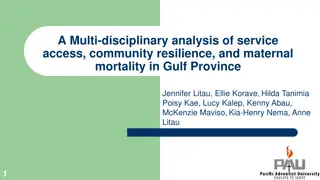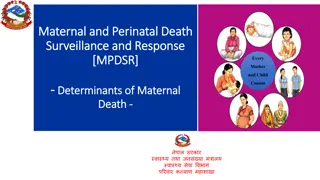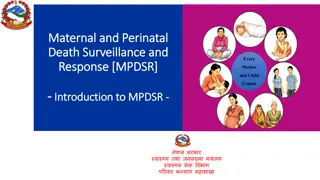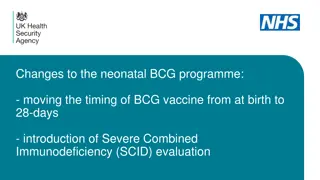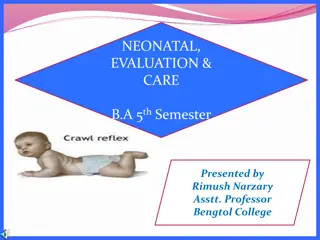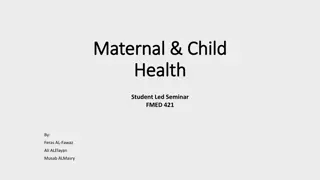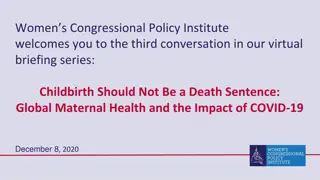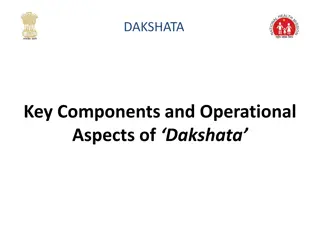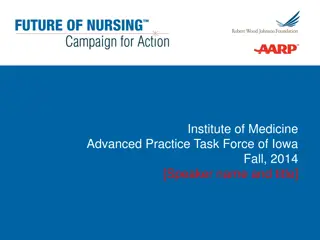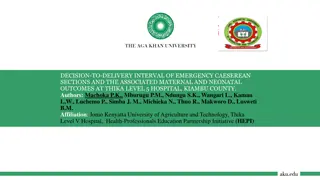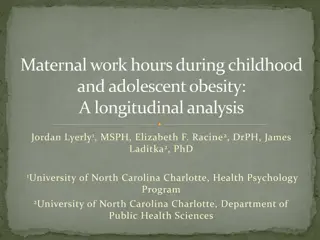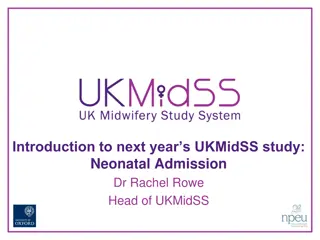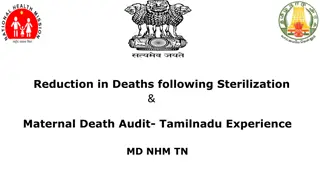Impact of Nurse-Midwife Intervention on Maternal and Neonatal Health
This study examines the sustained impact of a nurse-midwife intervention on maternal and neonatal health outcomes following an academic partnership between University of California San Francisco and Abwenzi Pa Za Umoyo. The intervention, which included intensive training and longitudinal mentorship, aimed to improve outcomes. Data from Malawi DHIS2 was analyzed before and after the intervention handover in October 2020. Results show changes in birth-related variables and the impact on maternal and neonatal complications, delivery locations, mode of delivery, and neonatal survival.
Download Presentation

Please find below an Image/Link to download the presentation.
The content on the website is provided AS IS for your information and personal use only. It may not be sold, licensed, or shared on other websites without obtaining consent from the author.If you encounter any issues during the download, it is possible that the publisher has removed the file from their server.
You are allowed to download the files provided on this website for personal or commercial use, subject to the condition that they are used lawfully. All files are the property of their respective owners.
The content on the website is provided AS IS for your information and personal use only. It may not be sold, licensed, or shared on other websites without obtaining consent from the author.
E N D
Presentation Transcript
Sustained impact of a nurse-midwife intervention on maternal and neonatal health following an academic partnership Daniel Maweu August 22, 2024 Partners In Health/ Abwenzi Pa Za Umoyo University of California San Francisco Global Action in Nursing
Background University of California San Francisco (UCSF) Global Action in Nursing (GAIN) partnered with Abwezi Pa Za Umoyo (APZU) in Neno in 2017 Goal: improve maternal and neonatal outcomes Combined intervention of intensive training with longitudinal bedside mentorship
Background Staged handover of project activities Planning and implementing trainings Maintaining longitudinal bedside mentorship October 2020: GAIN transitioned to limited support of research and evaluation A neonatal care mentorship session at Neno District Hospital, Malawi
Methods Data extracted from Malawi District Health Information Software 2 (DHIS2) DHIS2 data origin and entry process Data originate in the patient partograph 10 health facilities in the district Copied into the patient register Study period Aggregated in the monthly report Pre-handover: January 2019- September 2020 Post-handover: October 2020-May 2023 Transferred into DHIS2
Methods Bivariate analyses explored differences in the pre- and post-handover for all DHIS2 birth-related variables Data were not normally distributed Multivariate linear regression controlled for health facility
Variables Ministry of Health maternal health register data Maternal complications Associated emergency obstetric care Neonatal complications Associated emergency neonatal care Delivery location: health facility, in transit, at home/traditional birth attendant, other facility Mode of delivery: vaginal, breech vaginal, vacuum, cesarean section Neonatal survival: death, fresh stillbirth, and macerated stillbirth
Results Health facility Median number of births per month Median percent of referred cases per month (%) 12.50 14.84 28.57 10.52 13.33 16.66 27.27 3.70 0.88 0.00 Health center 1 Health center 2 Health center 3 Health center 4 Health center 5 Health center 6 Health center 7 Health center 8 Community hospital District hospital 24.38 21.45 3.74 13.00 17.50 40.30 17.0 31.52 109.03 162.13
Results 525 monthly reports: January 2019 to May 2023 across 10 facilities 209 pre-handover 316 post-handover Facilities reported an average: 44.3 births per month Health centers Average 21.2 births/ month 23,259 births 9,313 pre-handover 13,946 post-handover Hospitals 135.6 births/ month
Results Pre-handover (Total months=209) Median % [Min, Max] Post-handover (Total months=316) Median % [Min, Max] Unadjusted p- value Adjusted p- value* Maternal complications Antepartum hemorrhage 0 [0, 20.0] 0 [0, 20.0] 0.005 0.004 Maternal sepsis 0 [0, 20.0] 0 [0, 8.33] 0.031 0.015 Associated emergency obstetric care Manual removal of placenta 0 [0, 11.1] 0 [0, 7.69] <0.001 0.001 Neonatal complications Prematurity 2.38 [0, 50.0] 2.68 [0, 66.7] 0.184 0.040 Neonatal sepsis 0 [0, 19.4] 0 [0, 20.0] 0.012 0.050 Associated emergency neonatal care Neonatal antibiotics 0 [0, 79.8] 0 [0, 20.0] 0.074 0.019
Results and discussion Neonatal indicators Maternal indicators prematurity antepartum hemorrhage Establishment of a neonatal nursery maternal sepsis manual removal of the placenta significant decrease in reported neonatal sepsis subsequent decrease in neonatal antibiotics
Conclusions Lack of differences suggest practices were sustained Accurate reporting and subsequent care suggests providers have an improved ability to recognize complications Long-term mentorship is a pivotal for skill retention after trainings
Limitations DHIS2 Provider reporting practices Transition of providers to other districts
Recommendations for sustainability Transparent partnerships Mentorship after trainings Predetermined end points Bedside clinical skills support Staged handovers Center nurses and midwives for maternal and neonatal health
Thank you! Daniel Maweu dmaweu@pih.org
Complication/ care Total number of cases pre-handover Total number of cases post-handover Total number of cumulative cases in analysis APH 60 53 113 Maternal sepsis 16 7 23 Manual removal of placenta 22 4 26 Prematurity 364 541 905 Neonatal sepsis 63 14 77 Neonatal antibiotics 299 169 468
Health facility Mean number of births per month Median percent of referred cases per month (%) 12.50 14.84 28.57 10.52 13.33 16.66 27.27 3.70 0.88 0.00 Health center 1 Health center 2 Health center 3 Health center 4 Health center 5 Health center 6 Health center 7 Health center 8 Community hospital District hospital 24.38 21.45 3.74 13.00 17.50 40.30 17.0 31.52 109.03 162.13
Pre-handover (Total months=209) Mean% [SD] Post-handover (Total months=316) Mean% [SD] Unadjusted p- value Adjusted p- value* Maternal complications 0.877 (2.51) 0.354 (1.60) Antepartum hemorrhage 0.005 0.004 0.366 (2.20) 0.0448 (0.505) Maternal sepsis 0.031 0.015 Associated emergency obstetric care 0.337 (1.40) 0.0517 (0.540) Manual removal of placenta <0.001 0.001 Neonatal complications 3.68 (5.47) 4.90 (7.73) Prematurity 0.184 0.040 0.568 (2.29) 0.230 (1.58) Neonatal sepsis 0.012 0.050 Associated emergency neonatal care 1.27 (3.05) 1.27 (3.05) Neonatal antibiotics 0.074 0.019
